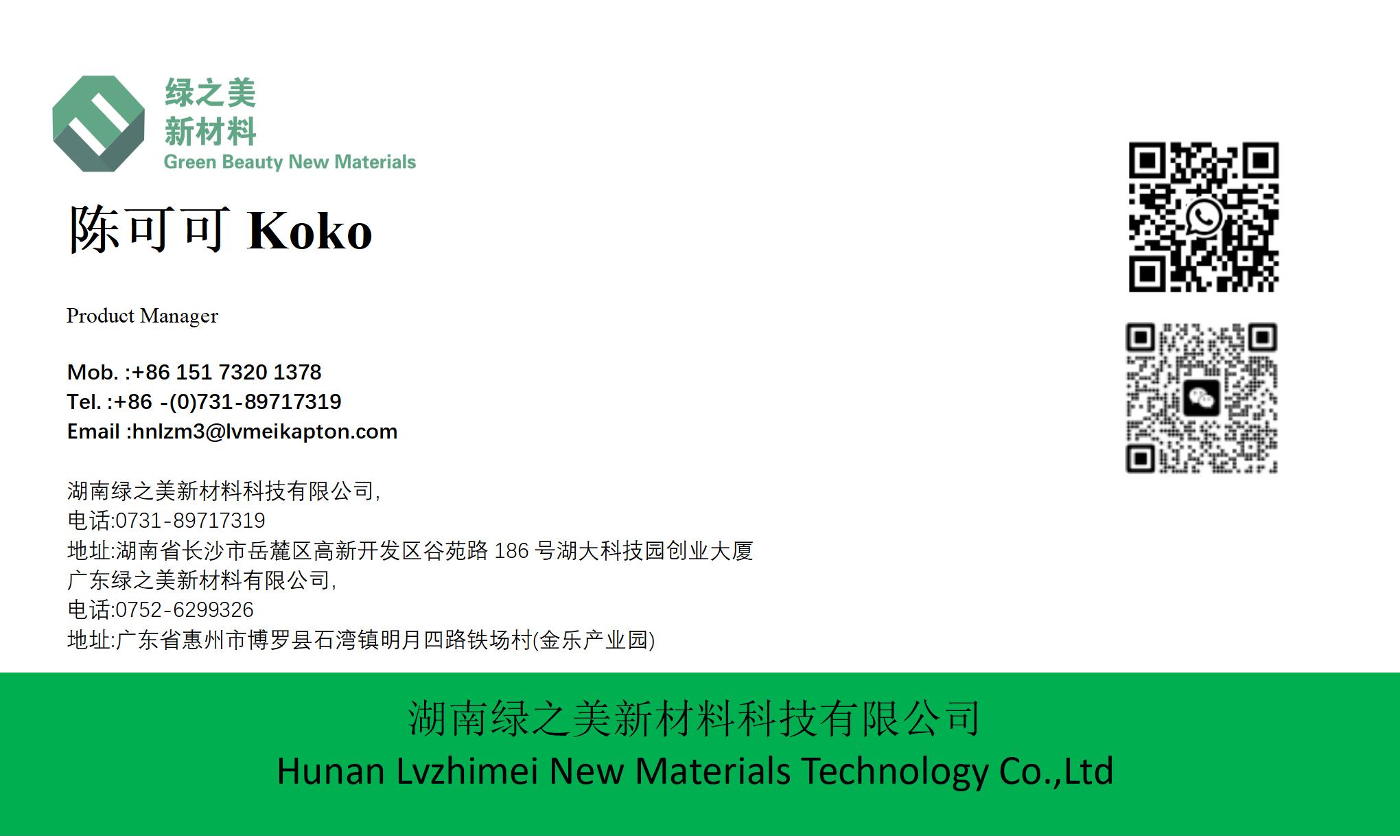hnlzm@lvmeikapton.com
+86 13787123465


Hunan Lvzhimei New Material Technology Co., Ltd.


NameDescriptionContent
How Does Gold Finger Polyimide Tape Compare to Other High-Temperature Tapes in Electronics Manufacturing? |https://www.lvmeikapton.com/
Source:
|
Author:Koko Chan
|
Published time: 2025-07-23
|
22 Views
|
Share:
This article compares gold finger polyimide tape with other high-temperature tapes, analyzing their performance in electronics manufacturing. It highlights "Strong adhesion and blocking high temperature tape", "PI material high temperature resistant 300 tape", and "lvmeikapton insulating electrical tape" against alternatives, emphasizing why polyimide variants excel for gold fingers.

In electronics manufacturing, selecting the right high-temperature tape is critical for protecting gold fingers—thin, gold-plated connectors vital for electrical conductivity. Gold finger polyimide tape, including variants like "Strong adhesion and blocking high temperature tape" and "PI material high temperature resistant 300 tape", competes with alternatives such as PET, aluminum, and glass cloth tapes. Understanding their differences is key to optimizing gold finger protection, process efficiency, and product reliability.
Temperature Resistance is a defining factor. Gold finger polyimide tape, exemplified by "PI material high temperature resistant 300 tape", withstands continuous temperatures up to 300°C, making it ideal for reflow soldering (280–300°C) and semiconductor annealing. In contrast, "Adhesive PET material high temperature tape" tops out at 150°C, suitable for low-heat steps like wire bundling but ineffective in soldering. Aluminum tapes, while heat-resistant, conduct electricity—risky for gold fingers needing insulation. "lvmeikapton insulating electrical tape" bridges this gap, offering 300°C resistance and electrical insulation, a combination unmatched by non-polyimide tapes.
Adhesion and Clean Removal set gold finger polyimide tape apart. "Strong adhesion and blocking high temperature tape" uses silicone adhesive that bonds firmly to gold, copper, and PCBs during high heat, then peels cleanly without residue. This contrasts with rubber-adhesive glass cloth tapes, which often leave sticky residues on gold fingers, disrupting conductivity. For example, in PCB assembly, "Strong adhesion and blocking high temperature tape" protects gold fingers during wave soldering (260°C) and removes easily, whereas glass cloth tape requires solvent cleaning, increasing production time.
Chemical and Solvent Resistance is another advantage. Gold finger polyimide tape resists aggressive solvents like acetone and flux removers, critical for post-soldering cleaning. "Self-adhesive back blocking spray paint tape", a polyimide variant, maintains integrity during conformal coating with epoxy or acrylics, ensuring gold fingers stay uncoated. PET tapes, by contrast, swell in solvents, risking coating seepage onto gold fingers. Aluminum tapes corrode in acidic fluxes, contaminating gold surfaces.
Electrical Insulation is where "lvmeikapton insulating electrical tape" shines. Gold fingers in high-voltage applications (e.g., EV batteries) need insulation to prevent short circuits. This tape offers dielectric strength >10kV/mm, outperforming conductive aluminum tapes and low-insulation PET tapes. In a test with 400V gold finger connectors, "lvmeikapton insulating electrical tape" prevented arcing, while PET tape failed after 500 hours.
The table below summarizes key comparisons:
Tape Type | Max Temp | Adhesion Stability | Electrical Insulation | Best for Gold Fingers? |
Gold Finger Polyimide (e.g., "PI material...") | 300°C | Excellent (silicone) | High (via "lvmeikapton...") | Yes (all high-heat steps) |
"Adhesive PET material high temperature tape" | 150°C | Good (acrylic) | Low | No (limited to low heat) |
Aluminum Tape | 250°C | Poor (degrades in flux) | Conductive | No (risks short circuits) |
Glass Cloth Tape | 260°C | Residue-prone | Moderate | No (leaves contaminants) |
Practical Applications highlight polyimide’s superiority. In automotive PCB manufacturing, "Strong adhesion and blocking high temperature tape" protects gold fingers during 280°C reflow soldering, while "Adhesive PET material high temperature tape" secures wires post-soldering. For 5G base stations, "lvmeikapton insulating electrical tape" insulates gold fingers in high-frequency connectors, preventing signal interference— a role no other tape can fulfill.
In conclusion, gold finger polyimide tape outperforms alternatives in high heat, adhesion, chemical resistance, and insulation. Variants like "PI material high temperature resistant 300 tape" and "lvmeikapton insulating electrical tape" are irreplaceable for gold finger protection, ensuring reliability in electronics manufacturing.


Hunan Lvzhimei New Material Technology Co., Ltd.
Quick Links
Product Categories
© 2024 Hunan Lvzhimei New Material Technology Co., Ltd.All Rights Reserved. Designed by Erge
0731 - 89717319
hnlzm@lvmeikapton.com
+86 13787123465
Room 502, Chuangye Building, No186, Guyuan Road, High-Tech District, Changsha, Hunan, China
CONTACT



